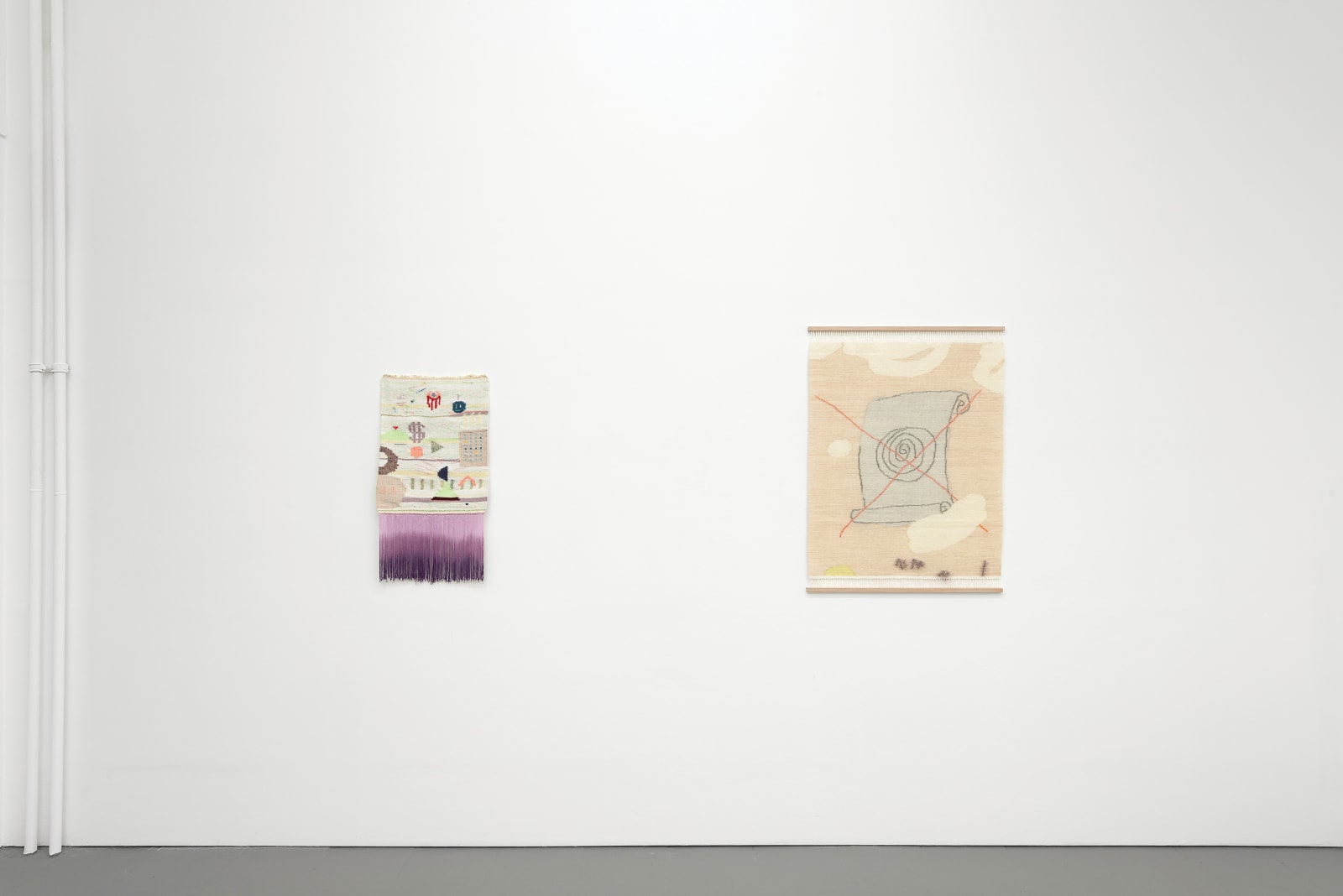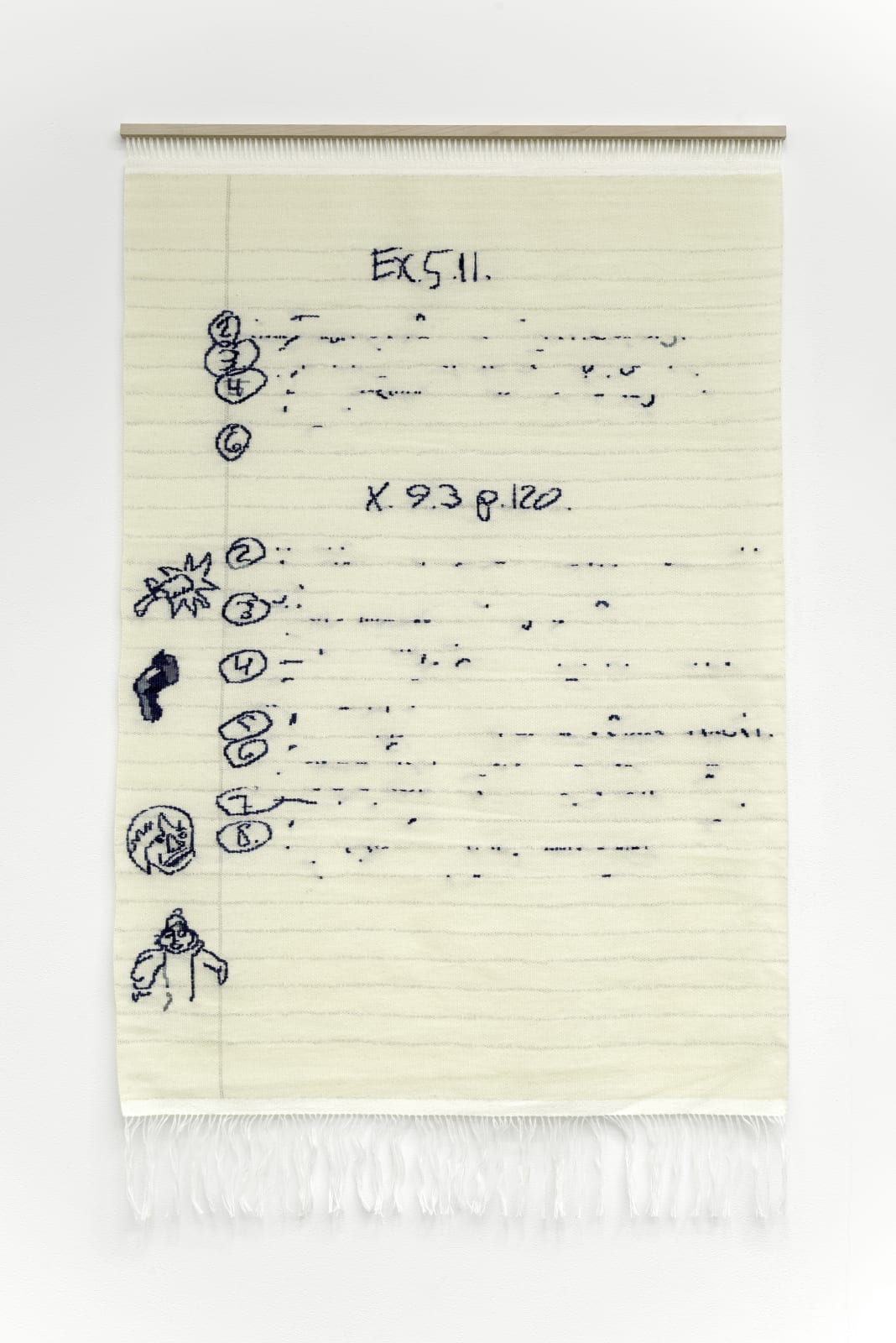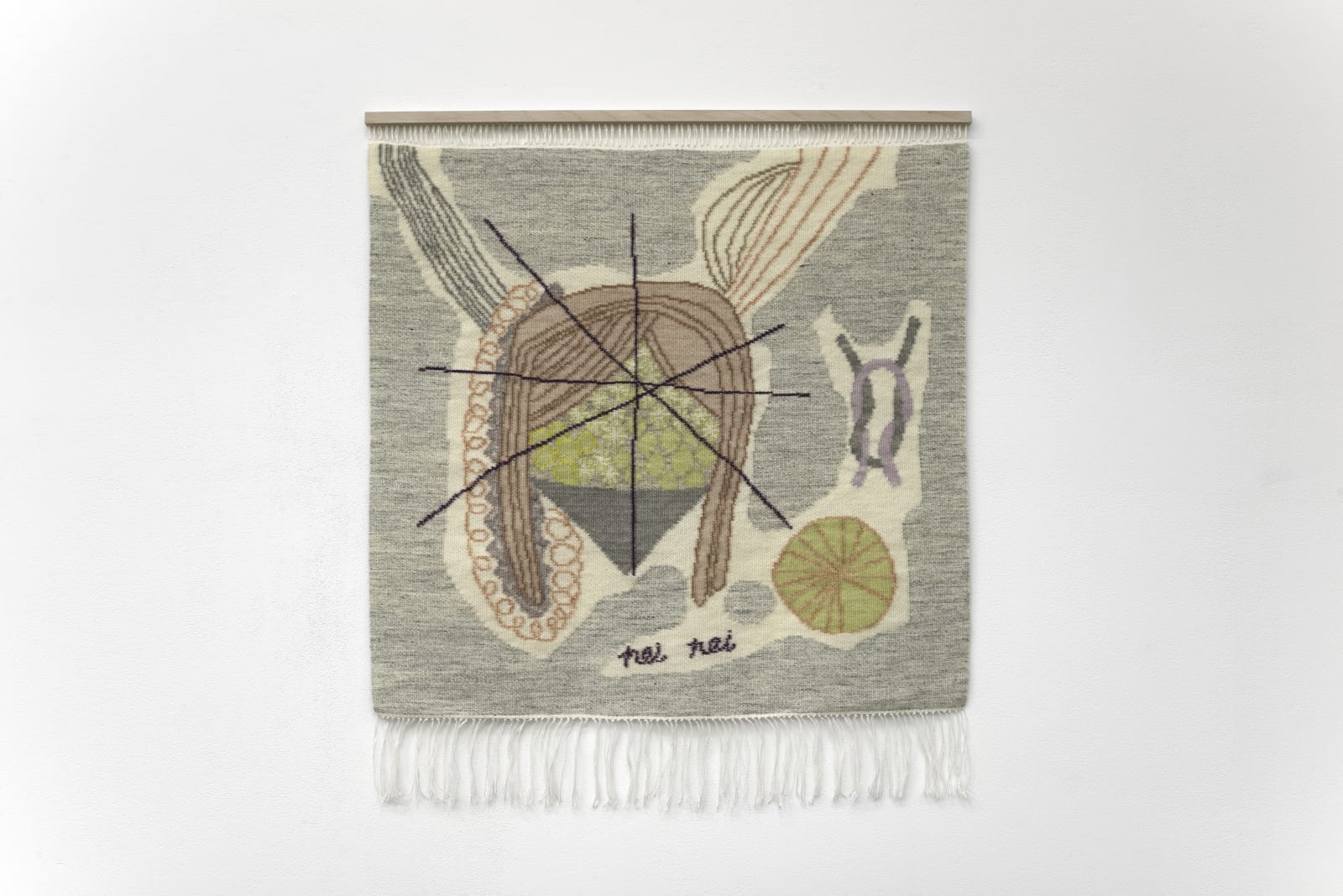Arna Óttarsdóttir: A Soft Power: Åplus, Berlin, Germany
Text by Katharina Wendler
Although the textile works and drawings by Arna Óttarsdóttir shouldn’t necessarily be
interpreted as being intentionally predefined or political, the exhibition title ‘A Soft Power’
aims to open up a number of possibilities to view her art in the light of connotations
commonly or uncommonly associated with the given term(s).
Softness.
A lack of hardness; the quality of being gentle and not loud or forceful; the quality of being
weak.¹
Not hard (changing shape easily, not stiff or firm, less hard than average),
not rough (smooth and pleasant to touch), without angles/edges,
not too bright, in a way pleasant and relaxing to the eyes (light/colors),
not strong or violent,
not loud (usually pleasant and gentle),
sympathetic (kind and sympathetic; easily affected by others),
not strict (not strict or severe),
crazy (stupid or crazy),
not tough (wanting to be safe and comfortable).²
Power.
The ability to control or effect people or things,
[in people] the ability or opportunity to do sth / a particular ability of the body or mind / all the abilities of a person’s body or mind,
the right or authority of a person or group to do sth,
[in compounds] the strength or influence in a particular area of activity / the influence of a particular thing or group within society,
the strength or energy contained in sth, a good or evil spirit that controls the lives of others.³
Soft Power.
The term soft power, first introduced in 1990 by political scientist Joseph Nye (US), is used to describe a form of power relation or a style of leadership – especially in foreign policy making and international relations – putting at its base the use of positive attraction and persuasion to achieve collaboration and/or recreation of a set example. It employs the ability to shape other peoples’ preferences and actions through appeal and attraction rather than coercion, command, or threat (Hard Power).
When asked “What is soft power?”, Nye delivers the following explanation: “Power comes in many guises, and soft power is not weakness. (…) When you can get others to admire your ideals and to want what you want, you do not have to spend as much on sticks [threats] and carrots [inducements] to move them in your direction. Seduction is always more effective than coercion.”⁴
He continues: “Soft power rests on the ability to shape preferences of others. (…) In a [personal] relationship, power does not necessarily reside with the larger partner, but in the mysterious chemistry of attraction. (…) Soft power is more than just persuasion or the ability to move people by argument, though that is an important part of it. (…) Simply put, in behavioral terms soft power is attractive power.”⁵
In order to engender cooperation, soft power calls on shared values and currencies such as attraction, admiration, justness, seduction, empathy, even love. In politics, the soft power of a nation builds on three pillars, namely culture, political values, and foreign policy.⁶ As opposed to other forms of power, it seems to have almost exclusively positive connotations, taking into account resources which might not be quantifiable or objectifiable but which are on the other hand perceptible, sensible, and, well, soft.
In this context, the soft power within the artworks of Arna Óttarsdóttir may lie in their combination of a quite literal softness (the textile, the colors, the shapes within her drawings) and a certain gentleness, unobtrusiveness, and charm radiating from them.
Although their appearance is at first glance rather feminine and delicate, the constitution of the tapestries themselves is quite powerful as the material is robust and almost imperishable.
Their shape, size and appearance on the other hand depend entirely on the good will of the artist, all the while in control of the resilient fibers. The works mostly depict drawings, woven into tapestries taking weeks, sometimes months of labor. The act of giving these seemingly insignificant scribbles and doodles so much attention and devotion can be described as a democratic or non-hierarchical one, as any snippet from her notebook could make it into an artwork, sooner or later. The works of Arna Óttarsdóttir do not scream for attention but quickly become objects of attraction by merely offering a subtle and discreet reclamation of authority, an invisible hand, and a benevolent narrative.
__________________
¹ Cambridge Dictionary, https://dictionary.cambridge.org/de/worterbuch/englisch/softness (04.01.2019).
² Oxford Advanced Learner’s Dictionary, 7th Edition, Oxford 2005, p. 1454.
³ Ibid. p. 1180.
⁴ Nye Jr., Joseph S.: Soft Power – The means to success in world politics. New York 2004, p. x.
⁵ Ibid. p. 5f.
⁶ The Soft Power 30 Index (an annual report aiming to „compare the relative strength of countries’ soft power resources; assessing the quality of a country’s political institutions, the extent of their cultural appeal, the strength of their diplomatic network, the global reputation of their higher education system, the attractiveness of their economic model, and a country’s digital engagement with the world.”, https://softpower30.com/what-is-soft-power/ (04.01.2019).












